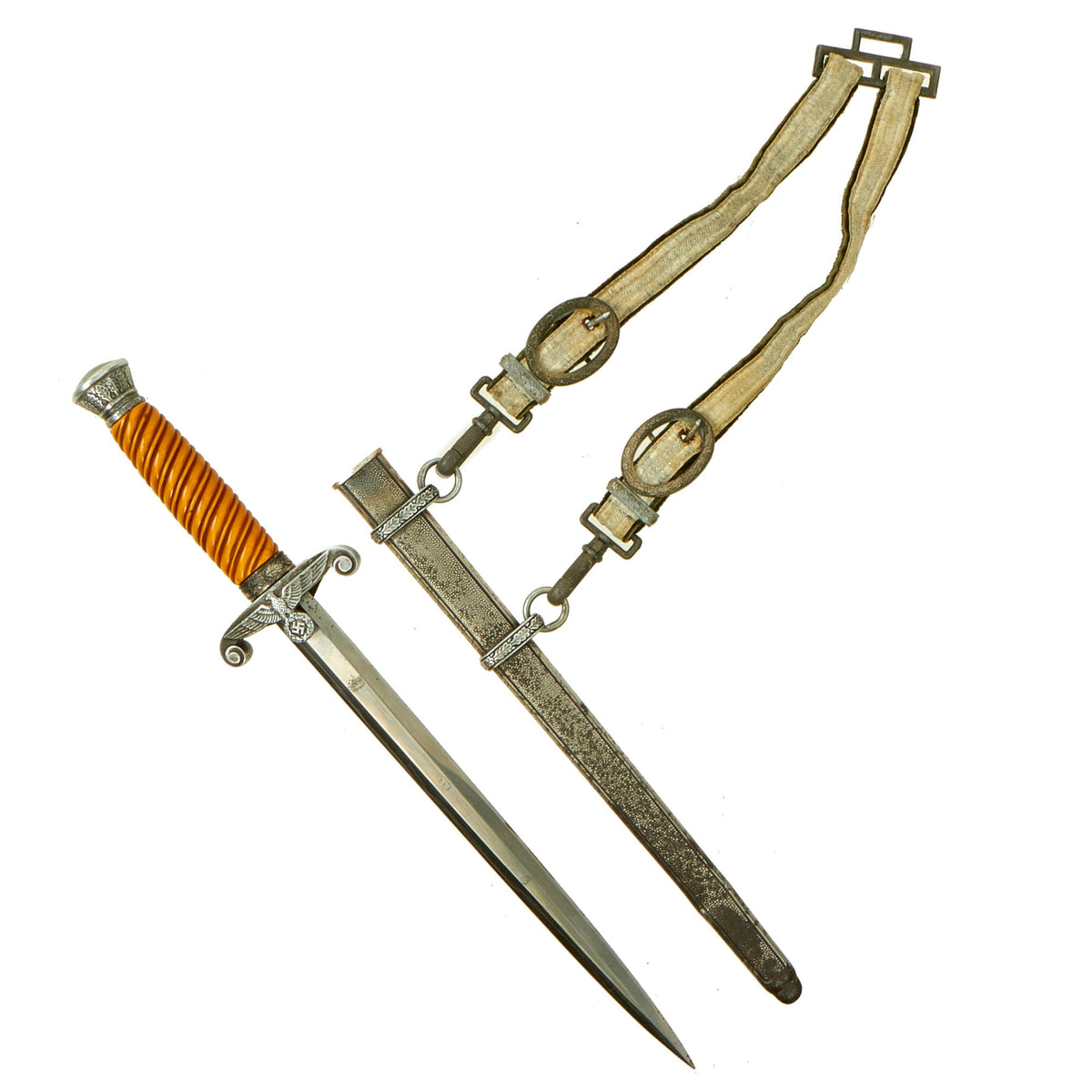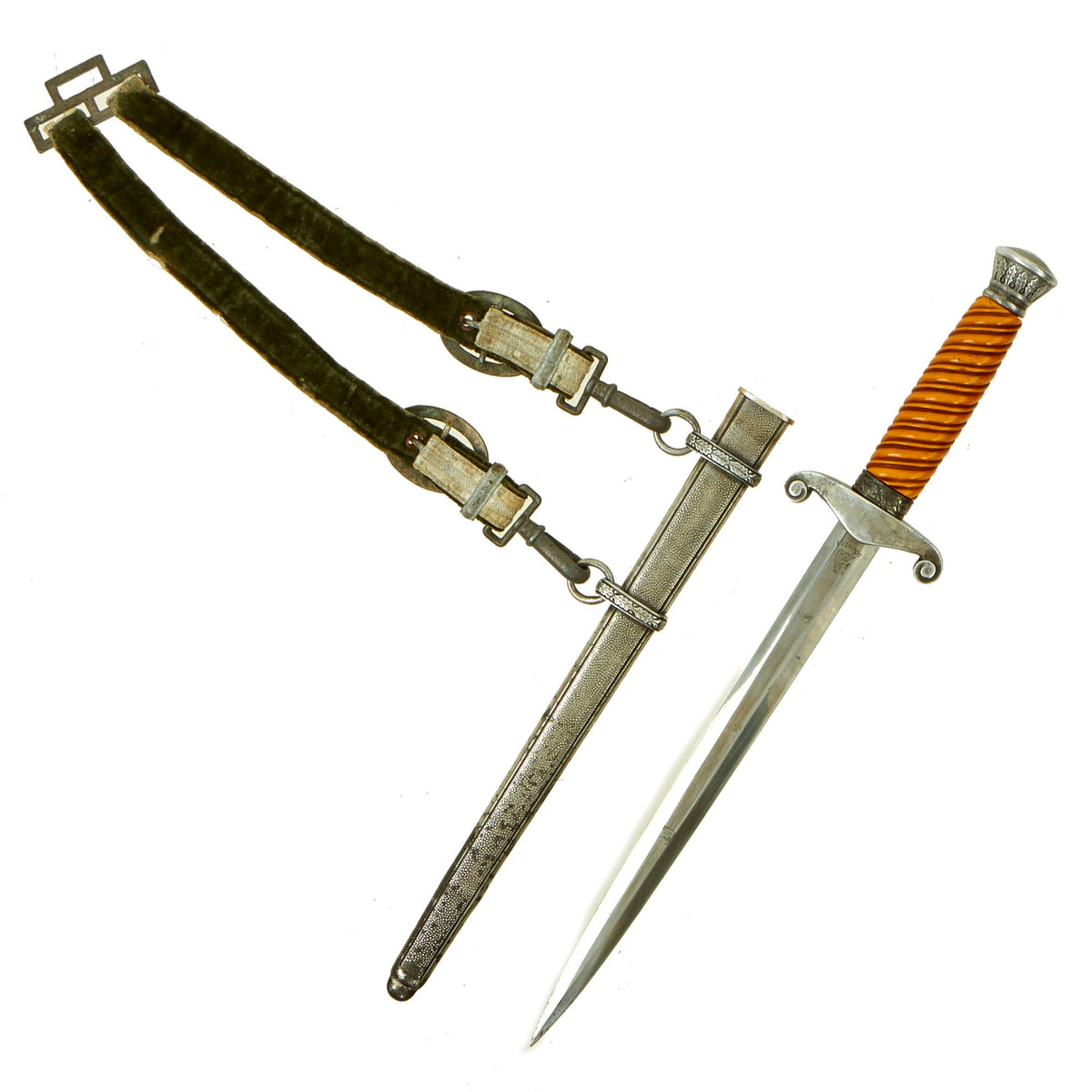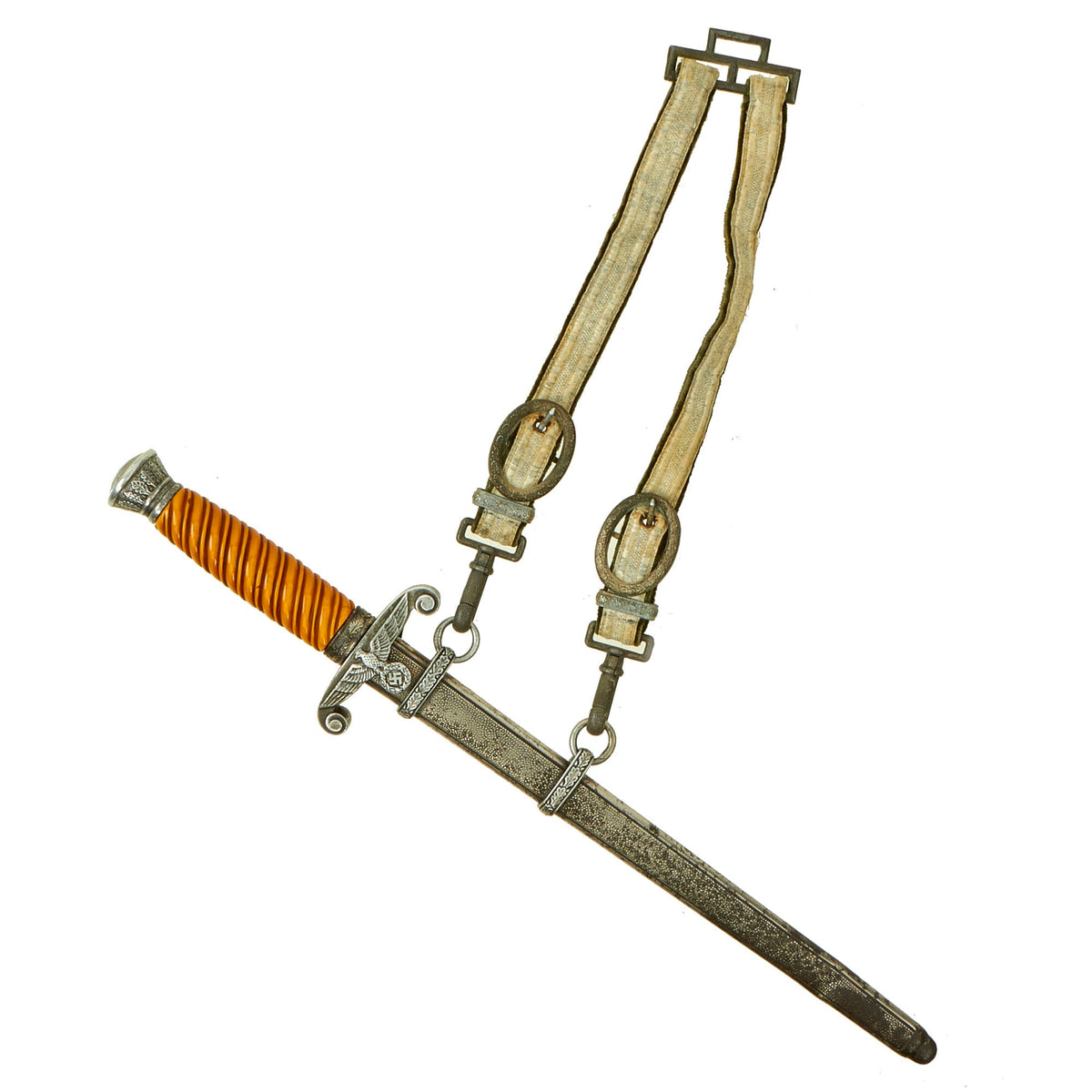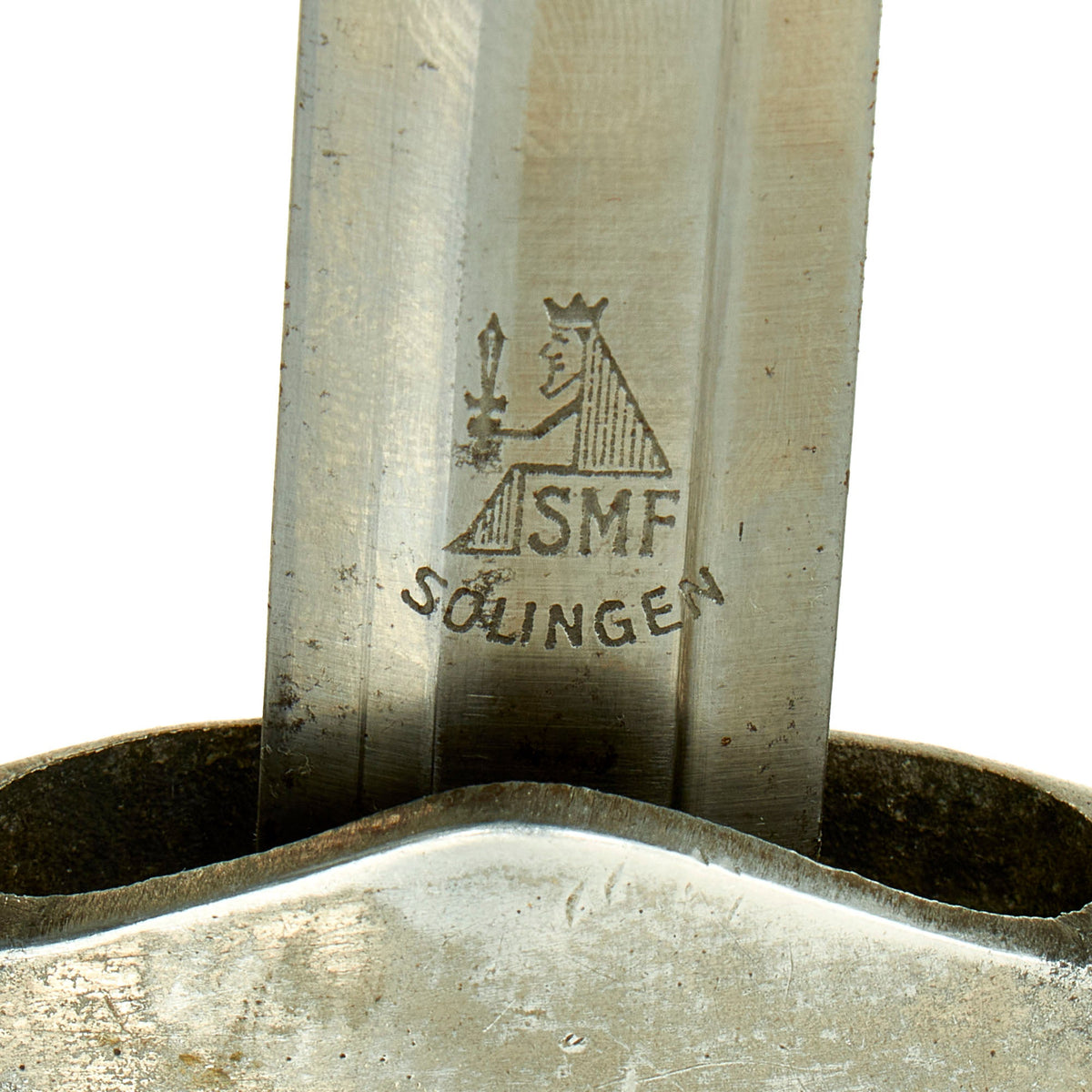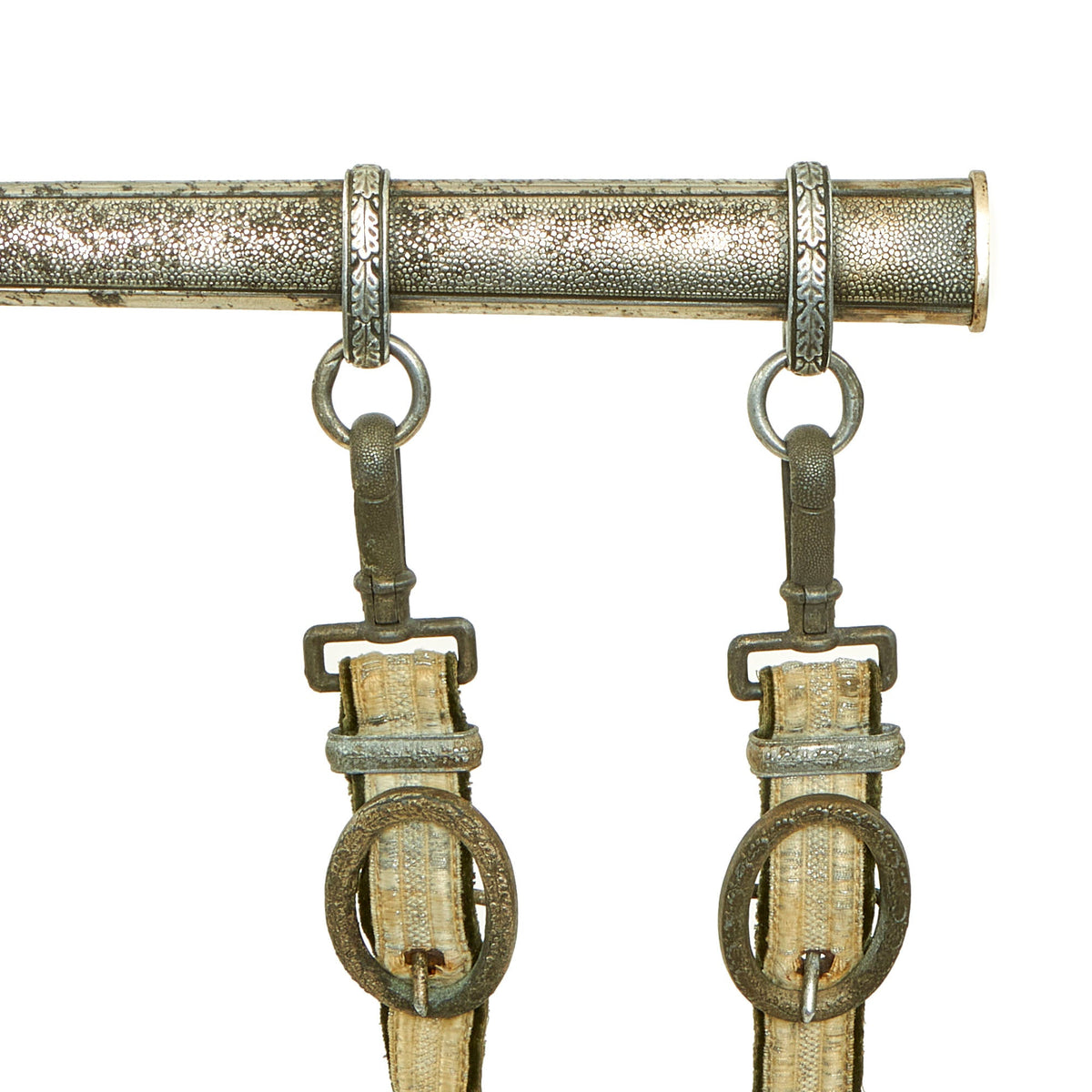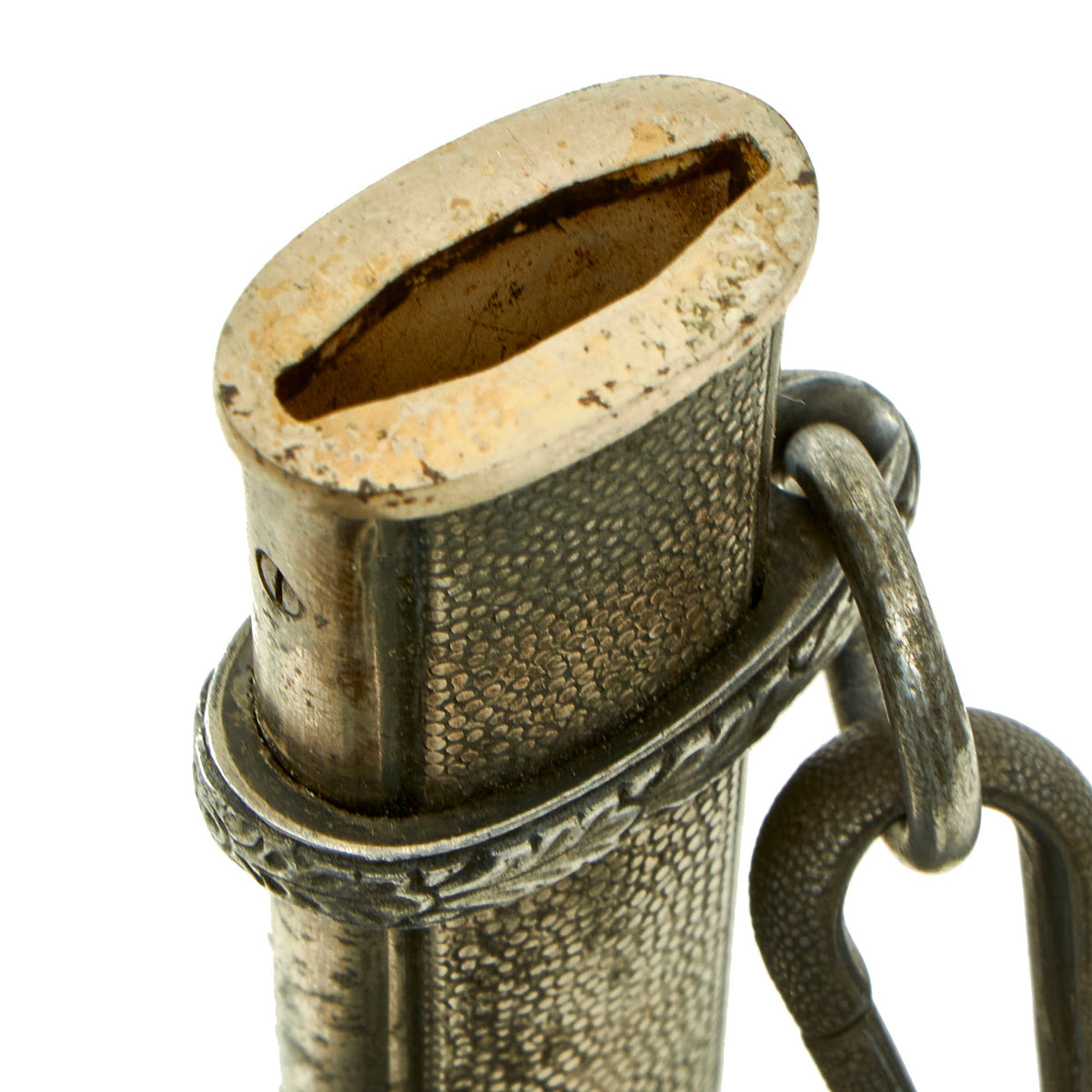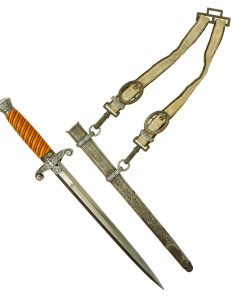Original German WWII Early Army Heer Officer Dagger by SMF with Scabbard and Hanger Original Items
$ 795,00 $ 238,50
Original Item: Only One Available. This is a very nice early Army Officer’s Dagger, produced by Solinger Metalwaren-Fabrik Stöcker & Co. GmbH, also known as SMF, a well known firm based in Solingen, Germany. We have only had one army dagger from this maker before, and they seem to have been much more engaged in making edged weapons for the Luftwaffe. The aluminum pommel of this dagger is in very good condition, showing a wear and scratching around the edge. The original plating looks to be mostly worn away on the bottom, with more retained on the sides.
The plated crossguard is in similar condition, with much of the original plating worn away around the edges, leaving a great worn patina. The details throughout the characteristic SMF eagle are exceptional throughout the head, breast and wing feathering, talons and wreathed mobile swas (hook cross). The grip ferrule was originally silver plated steel, however it has now oxidized, showing a dark patina. The grip is has faded to a nice light caramel color, typical of celluloid grips from this period. This grip is in very good condition, with minimal staining, with just a bit of chipping and wear, but no cracks or big chunks missing. It is slightly loose on the tang due to shrinking over the years.
The very good condition blade is mostly bright throughout, showing most of the original factory final grind cross grain. This texture is iconic, and is the definitive identifying characteristic for a real WWII German Blade. It is retained about 80%, with some lost due to cleaning away stains on both sides, which looks to have originated as contact with the runners. The tip is still intact, with no bending, just some light wear. The edge has correctly not been sharpened, though it does have a few tiny dents.
The reverse ricasso of this sword is marked with the SMF trademark logo, which features the etched king holding an upward pointing sword, and is known as the “Seated King”. The king is sitting on the firm initials SMF and is positioned above an arch shaped town location SOLINGEN. Solinger Metalwaren-Fabrik Stöcker & Co. GmbH, also known as SMF, were one of the major suppliers of edged weapons to the Luftwaffe during WWII. As the name implies, they were located in Solingen, the legendary “City of Blades” in Western Germany. For more information, please see J. Anthony Carter’s fine work GERMAN SWORD AND KNIFE MAKERS.
The scabbard is a good example, made from plated steel, though it does have a crush dent and a bend about 2 inches from the bottom. It also has seem oxidation and wear to the plating, which is now mostly gone, showing some areas of oxidation towards the bottom. This straight scabbard has very crisp, finely grained panels. The aluminum carrying bands have an excellent pattern of overlapping oak leaves and acorns, which are nicely enhanced, though they do show wear. The throat is the thinner style, and has flush securing screws on the thinner sides of the scabbard.
Attached to the scabbard is a good condition belt hanger, with functional pebbled spring clips with a great patina. The buckles and keepers are engraved with the same oak and acorn motif seen throughout the dagger. The straps are in very good condition, with the blue green velvet on the back is retained about 80%, and the silver bullion front side showing wear. There is some oxidation on the fittings, but that is to be expected. There are no signs of any type of repairs on the hanger.
A very nice example of an Army Officer Dagger from a well-known but seldom seen maker. Complete with scabbard and hanger, this dagger is ready to display!
Specifications:
Blade Length: 9 1/2″
Blade Style: Spear Point Dagger
Overall length: 14“
Crossguard: 2 3/4”
Scabbard Length: 11 1/8″
The German Army (Heer) first carried a dagger beginning in 1935. The weapon was worn in lieu of occasions not demanding the wearing of a more formal sword. The dagger design was quite attractive featuring silvered heavy fittings with white or colored grip. The crossguard depicted a Wehrmacht open-winged eagle clutching a wreathed swas.
The pommel depicted oak leafing around the outer circumference. The scabbard had panels of pebble designs. Later produced examples were plated with nickel, and late war-made pieces were unplated, finished in a gray color metal. These daggers are often encountered with an aluminum portepee.
Fast Shipping with Professional Packaging
Thanks to our longstanding association with UPS FedEx DHL, and other major international carriers, we are able to provide a range of shipping options. Our warehouse staff is expertly trained and will wrap your products according to our exact and precise specifications. Prior to shipping, your goods will be thoroughly examined and securely secured. We ship to thousands clients each day across multiple countries. This shows how we're dedicated to be the largest retailer on the internet. Warehouses and distribution centres can be located throughout Europe as well as the USA.
Note: Orders with more than one item will be assigned a processing date depending on the item.
Before shipping before shipping, we'll conduct a thorough inspection of the items you have ordered. Today, the majority of orders will be delivered within 48 hours. The delivery time will be between 3-7 days.
Returns
The stock is dynamic and we cannot completely manage it because multiple stakeholders are involved, including our factory and warehouse. So the actual stock may alter at any time. It's possible that you may not receive your order once the order has been made.
Our policy is valid for a period of 30 days. If you don't receive the product within 30 days, we are not able to issue a refund or an exchange.
You can only return an item if it is unused and in the same state as the day you received it. You must have the item in its original packaging.
Related products
Uncategorized
Australian WWII Owen MK1 Machine Carbine SMG Custom Fabricated Replica with Sling Original Items
Uncategorized
Uncategorized
Uncategorized
Uncategorized
Uncategorized
Uncategorized
Uncategorized
Uncategorized
Uncategorized
Armored Burgonet Helmet & Polearm from Scottish Castle Leith Hall Circa 1700 Original Items
Uncategorized
Uncategorized
Uncategorized
Uncategorized
Uncategorized
